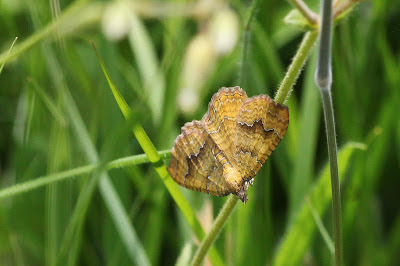Foster's Green and Eades Meadow are Nature Reserves that have been given National Nature Reserve Status.
This is the extract from the Worcestershire Wildlife site. If you visit it is really important not to go off the path. Where people have the flowers are easily trampled and the beauty of the site could easily be lost.
Foster’s Green and Eades Meadows were once Foster’s Green Farm and have not been ploughed for at least 100 years nor have they ever been treated with chemical fertilisers, herbicides or other agricultural chemicals.
Lying on heavy clay soils, their interest lies in the large number of plants that grow here – over 180 have been recorded - and the huge number of insects, spiders and other invertebrates that they support. Eades Meadow is particularly famous for its green-winged orchids in spring and meadow saffron in autumn. The colour of the meadow changes daily as different flowers come into flower throughout spring and summer.
Foster’s Green Meadow is still farmed and Eades is grazed by cattle in late autumn and early winter before being left to grow hay. The hay is cut late the following summer after the flowers have seeded. Following a period of growth, the field is grazed and the cycle begins again.
Part of the land was once a small orchard and a few apple trees remain. A number of large oak trees mark the positions of old field boundaries and young trees have been plated as future replacements. The huge elms which once grew in the hedges were killed by elm disease and their demise opened up the field to the wind and sun.
Please note that due to the fragility of the site, visitors should not stray from the public footpath that crosses part of the meadow.
 |
| Greater Knapweed |
 |
Yellow Rattle
The brown, purse-like calyxes (containing the sepals) of Yellow-rattle give this plant its common name - brush through a wildflower meadow at the height of summer and you'll hear the tiny seeds rattling in their pods. This
annual plant thrives in grasslands, living a semi-parasitic life by feeding off the nutrients in the roots of nearby grasses. For this reason, it was once seen as an indicator of poor grassland by farmers, but is now often used to turn improved grassland back to meadow; it feeds off the vigorous grasses, eventually allowing more delicate species to push their way through.
|
 |
| Common Spotted Orchid |
 |
| Yellow Vetch |
 |
| Ladies Bedstraw - Galium Verum |
In the past the dried plants of Ladies Bedstraw were used to stuff mattresses, as the fragrant scent of the plants acts as a flea killer. The flowers were also used to coagulate milk in cheese manufacture and, in Gloucestershire, to colour the cheese Double Gloucester.
 |
| A bashful Oxeye Daisy |
 |
| Common Spotted Orchid |
 |
| Self heal - Prunella Vulgaris |
Self-heal is edible: the young leaves and stems can be eaten raw in salads; the whole plant can be boiled and eaten as a potherb; and the aerial parts of the plant can be powdered and brewed in a cold infusion to make a tasty beverage.
Medicinally, the whole plant is poulticed onto wounds to promote healing. A mouthwash made from an infusion of the whole plant can be used to treat sore throats,
thrush and gum infections. Internally, a tea can be used to treat diarrhea and internal bleeding.
 |
| Quaking Grass |
Gently shivering in the breeze, the loose heads of Quaking-grass are a distinctive feature of meadows and grasslands, particularly those on chalky soils. Its heart-shaped flower heads dance on delicate stems, giving the plant many different common names such as Totter Grass, Dithery Dock, Wigwams and Toddling Grass.
 |
| Small Tortoiseshell |
 |
| Small Tortoiseshell |
 |
| Yellow Shell Moth - Camptogramma bilineata |
 |
| Chimney Sweeper - Odezia atrata |
 |
| Crested Dogstail |
 |
| Flag Irises |






















No comments:
Post a Comment